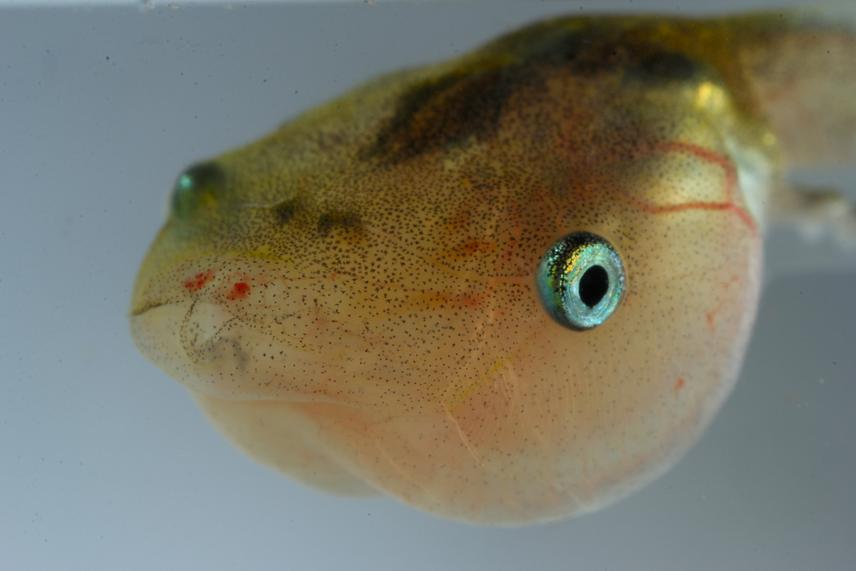Gayani Senevirathne
This work will significantly advance the building of a comprehensive knowledge base on the life history and ecology of Sri Lankan amphibians having a tadpole stage.

Microhyla tadpole frontal view.
Biphasic life history of amphibians allows resource partitioning between the young (early life stages) and the adults, but it also increases differential threats to their survival under different ecological regimes. Amphibian conservation in this region mostly concentrates on adult frogs, especially since tadpoles are so poorly known.
This project will bridge the knowledge gap bringing the tadpoles and the early life history stages of these amphibians to the realms of conservation. This project focuses on all species using a combination of methods such as DNA-barcoding, descriptive morphology, ecology, and this work will help provide a deeper understanding of Sri Lankan amphibians, thus greatly facilitating their conservation. Here, multiple criteria will be used in the identification and description of tadpoles, which will eliminate the ambiguity associated with tadpole identification. It will also help make effective identification keys, which could also take into account the morphological variation and polymorphism often associated with amphibian larvae. A better understanding of the breeding conditions, seasonality and distribution of tadpole larvae, will help focus conservation attention, especially on the threatened species of the island.
Recognition of within habitat distribution patterns for species will identify help delineate the microhabitat utilization patterns, and will further help us to understand the niche of a species in amphibian communities. This will in turn help studying larval interactions and help identify habitat generalists from habitat specialists. The broader knowledge generated will help amphibian population monitoring and will be pivotal in documenting amphibian declines - a burden that humanity needs to address in the face of the current human caused extinction wave.